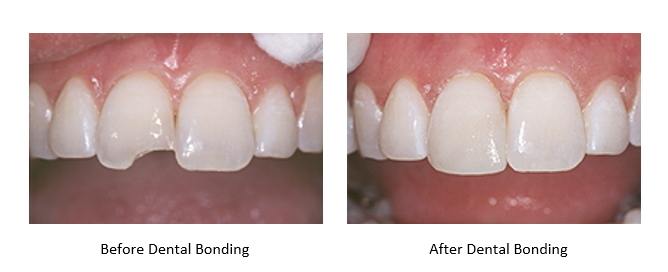

Can Dental Bonding Be Whitened?
In the world of cosmetic dentistry, dental bonding is a popular treatment option for improving the appearance of teeth. It involves applying a tooth-colored resin material to the tooth surface, which is then hardened and bonded to the tooth using a special light. Dental bonding can be used to fix various dental issues, such as chipped or cracked teeth, gaps between teeth, and discoloration. However, if you have dental bonding and are looking to whiten your teeth, you may be wondering if it is possible to whiten bonded teeth. In this article, we will explore this question and provide you with the information you need.
Understanding Dental Bonding
Dental bonding is a versatile cosmetic procedure ideal for patients seeking minor smile enhancements. During bonding, a tooth-colored resin is carefully applied, shaped, and hardened to match the natural teeth, offering a quick and affordable solution for aesthetic concerns.
Can Dental Bonding Be Whitened?
While dental bonding can be whitened to an extent, traditional methods like bleaching are ineffective due to the resin’s composition. However, alternatives like polishing can remove surface stains, improving the bonding’s appearance. For significant color changes, replacing the bonding with a lighter shade may be recommended.
Polishing Dental Bonding
Polishing is a non-invasive technique to enhance the bonding’s color and appearance. Using special instruments, dentists gently remove stains and discoloration from the surface. Although not permanent, regular cleanings and good oral hygiene practices can help maintain the bonding’s appearance over time.
Key Takeaways: Can Dental Bonding Be Whitened?
- Dental bonding can be whitened to some extent.
- Professional teeth whitening treatments may be more effective than at-home methods.
- Whitening products with hydrogen peroxide can help remove stains from dental bonding.
- It’s important to consult with a dentist before attempting to whiten dental bonding.
- Dental bonding may need to be replaced if it becomes discolored or stained beyond repair.
Frequently Asked Questions
1. Can dental bonding be whitened?
Yes, dental bonding can be whitened to some extent. Dental bonding is a cosmetic dental procedure that involves applying a tooth-colored resin material to the teeth to improve their appearance. While bonding material itself cannot be whitened, the surrounding natural teeth can be whitened to match the bonded teeth.
If you have dental bonding and want to whiten your teeth, it is best to consult with your dentist. They can evaluate your specific case and recommend the best approach. In some cases, they may suggest whitening the natural teeth first and then adjusting the bonding material to match the new shade. Alternatively, they may recommend replacing the bonding material altogether to achieve the desired whiteness.
2. What are the options for whitening dental bonding?
When it comes to whitening dental bonding, there are a few options to consider. One option is professional teeth whitening performed by a dentist. This involves using a whitening agent that is applied directly to the teeth. While this method can effectively whiten natural teeth, it may not have the same impact on dental bonding material.
Another option is replacing the bonding material with a lighter shade. This can be done if the bonding material is old, damaged, or no longer matches the desired tooth color. Your dentist can remove the old bonding material and replace it with a new one that matches your preferred whiteness level.
3. Can over-the-counter whitening products be used on dental bonding?
Over-the-counter whitening products, such as whitening toothpaste or whitening strips, are generally not recommended for dental bonding. These products are designed for natural teeth and may not be effective in removing stains or whitening the bonding material. They can also potentially damage the bonding material or cause it to become discolored.
If you are considering whitening your dental bonding, it is best to consult with your dentist. They can provide guidance on the most suitable whitening options for your specific case and ensure that the bonding material remains intact and undamaged.
4. How long does dental bonding last?
Dental bonding is a relatively durable cosmetic dental procedure, but its lifespan can vary depending on various factors. On average, dental bonding can last between 5 to 10 years. However, proper oral hygiene practices, regular dental check-ups, and avoiding habits that may damage the bonding material, such as biting on hard objects or chewing on ice, can help prolong its lifespan.
It is important to note that dental bonding is not as durable as other restorative dental treatments, such as dental veneers or crowns. Over time, the bonding material may chip, stain, or become discolored. If you notice any issues with your dental bonding, it is best to consult with your dentist for proper evaluation and potential repair or replacement.
5. Are there any alternatives to dental bonding for teeth whitening?
Yes, there are alternatives to dental bonding for teeth whitening. One popular alternative is dental veneers. Veneers are thin shells made of porcelain or composite resin that are custom-made to fit over the front surface of the teeth. They can effectively cover stains and discoloration and provide a whiter and more uniform appearance.
Another alternative is professional teeth whitening. This involves using a whitening agent that is applied to the teeth to remove stains and discoloration. Professional teeth whitening can be done in-office by a dentist or at-home using custom-made whitening trays. It is important to consult with your dentist to determine the most suitable option for your specific case.
How to whiten composite bonding? | Holly Dental Practice
Final Summary: Can Dental Bonding Be Whitened?
After exploring the topic of dental bonding and its potential for whitening, it is clear that while dental bonding itself cannot be whitened, there are ways to enhance its appearance and maintain its brightness.
Dental bonding is a cosmetic dental procedure that involves applying a tooth-colored resin to the teeth to improve their shape, size, or color. Unlike natural teeth or other dental restorations like veneers or crowns, dental bonding is not able to be whitened through traditional teeth whitening methods.
While dental bonding may not be able to be whitened in the traditional sense, there are alternatives and strategies to keep it looking its best. By exploring options with a dentist and maintaining good oral hygiene practices, individuals with dental bonding can achieve a bright and confident smile. Remember to consult with a dental professional to determine the best course of action for
Call or Book appointment online
:Ace Dental Care Alpharetta office: 678-562-1555 - Book Now
Ace Dental Care Norcross office: 770-806-1255 - Book Now
Disclaimer
This blog post was generated by artificial intelligence. The content of this post may not be accurate or complete, and should not be relied upon as a substitute for professional advice. If you have any questions about the content of this post, please contact us.
We are constantly working to improve the accuracy and quality of our AI-generated content. However, there may still be errors or inaccuracies. We apologize for any inconvenience this may cause.





